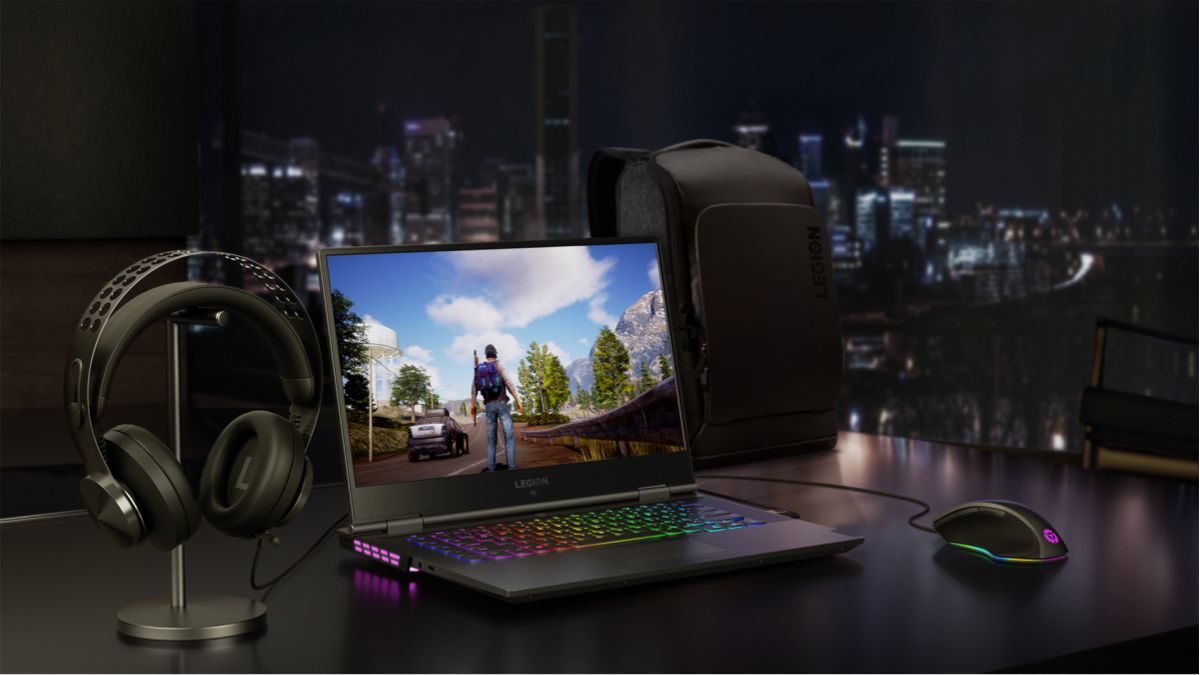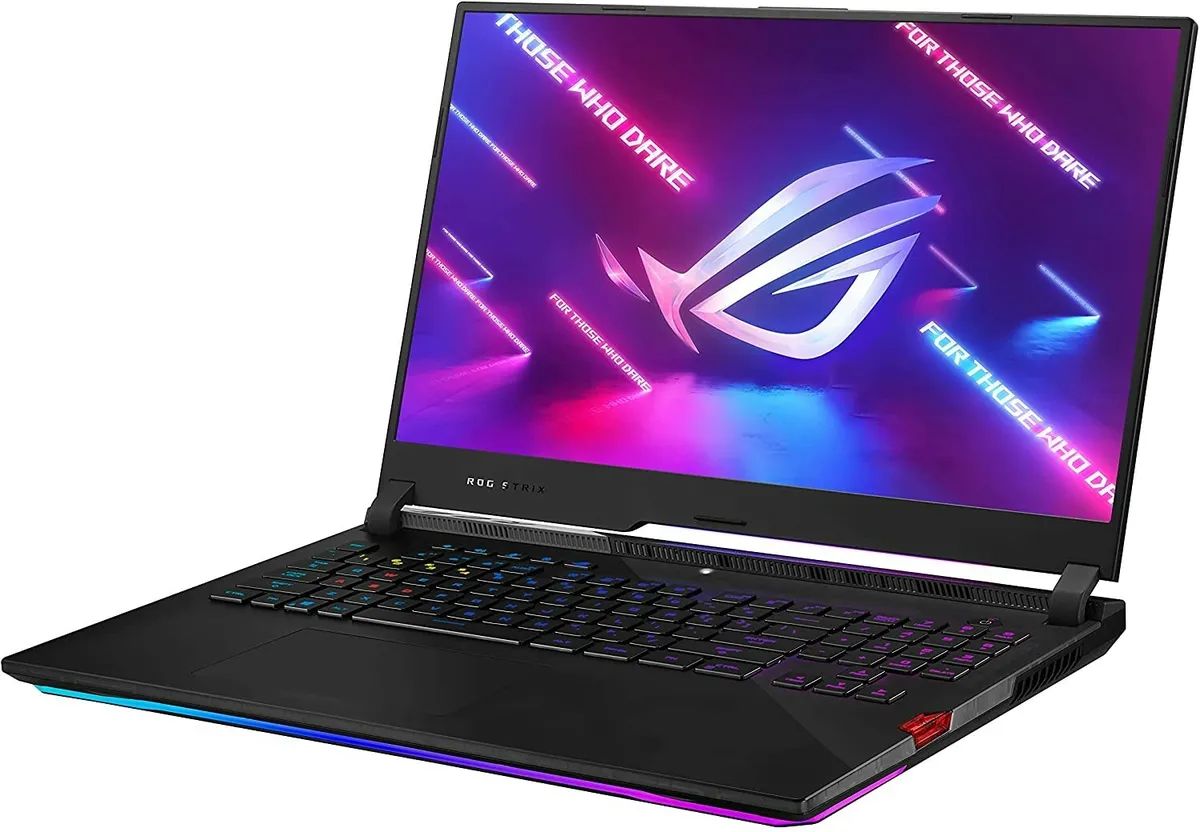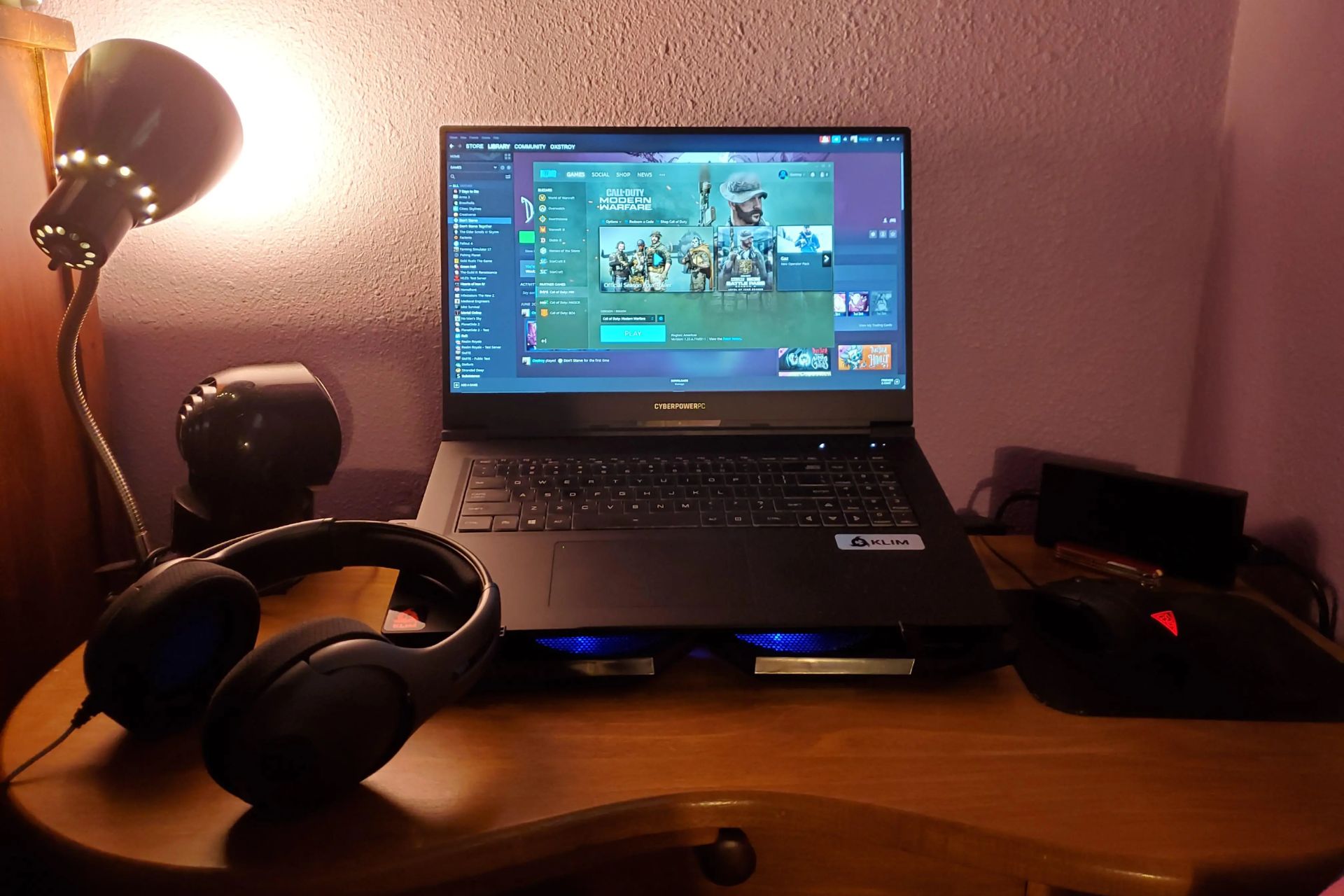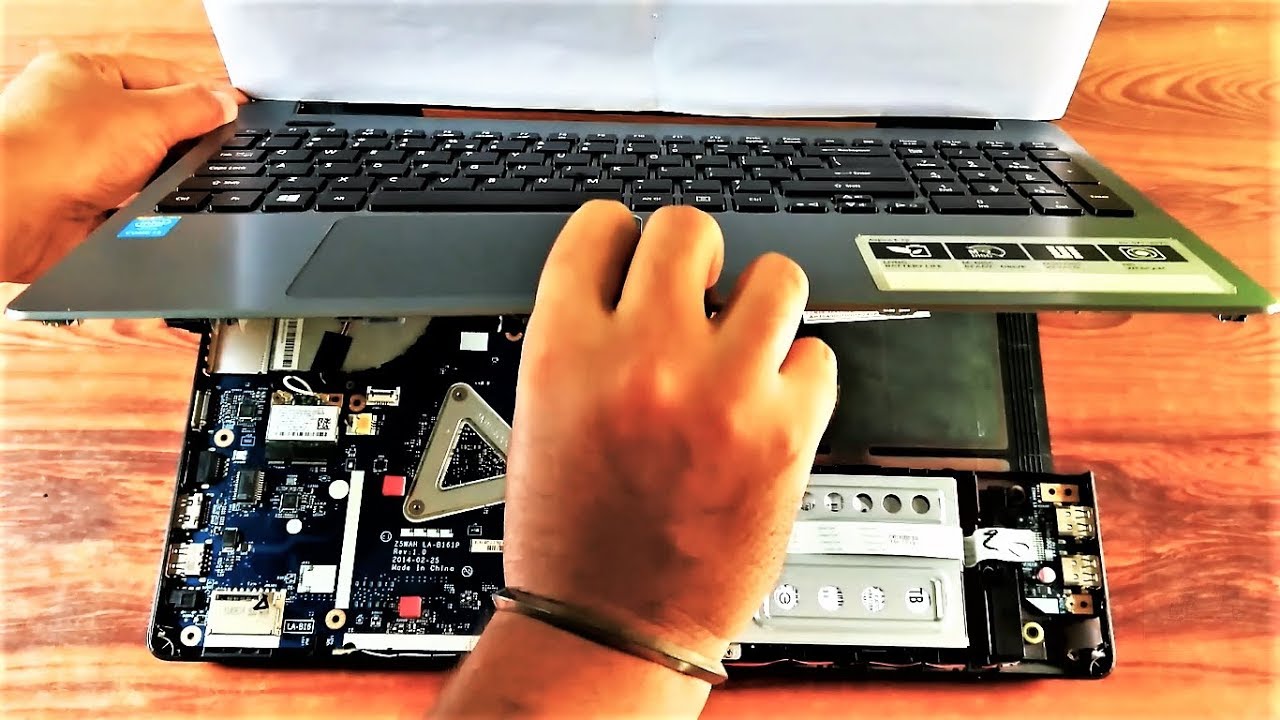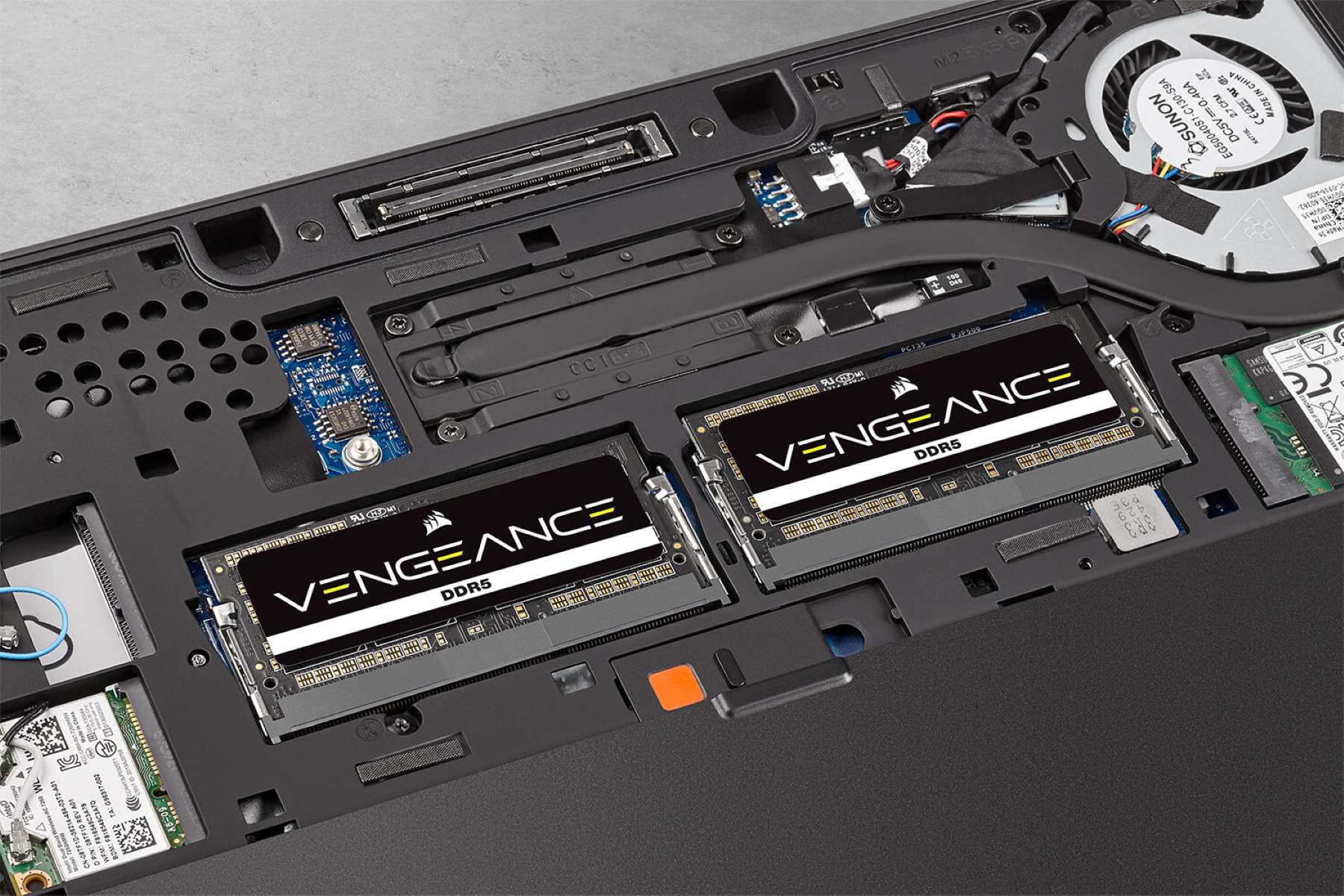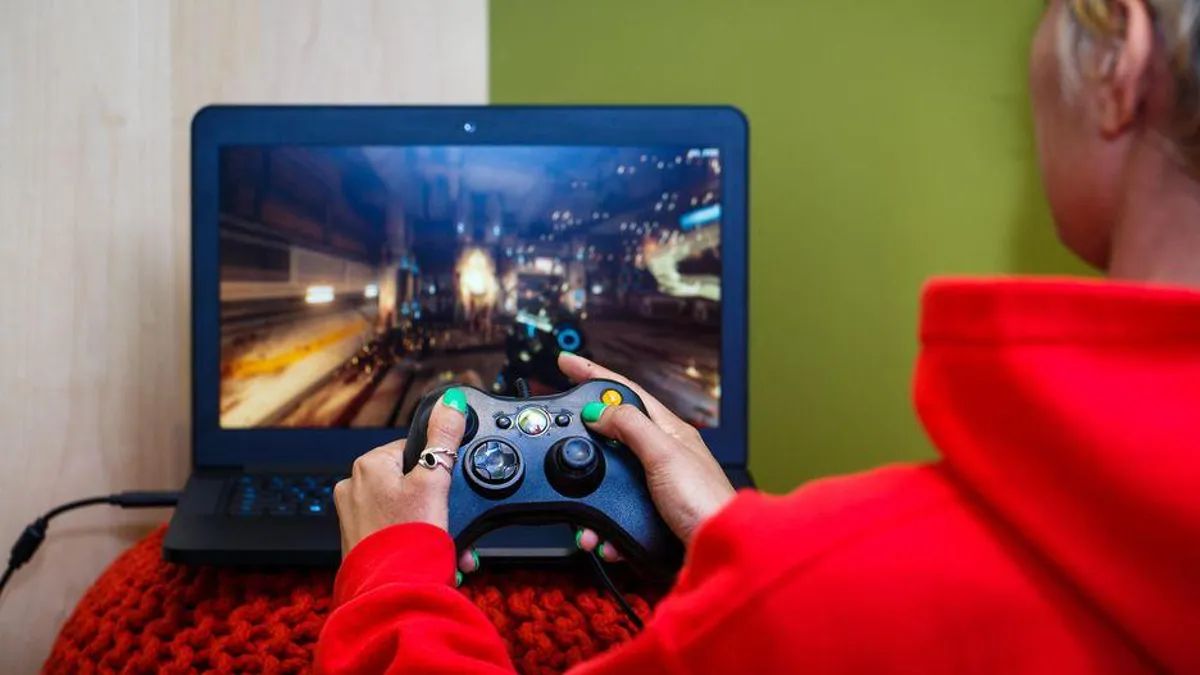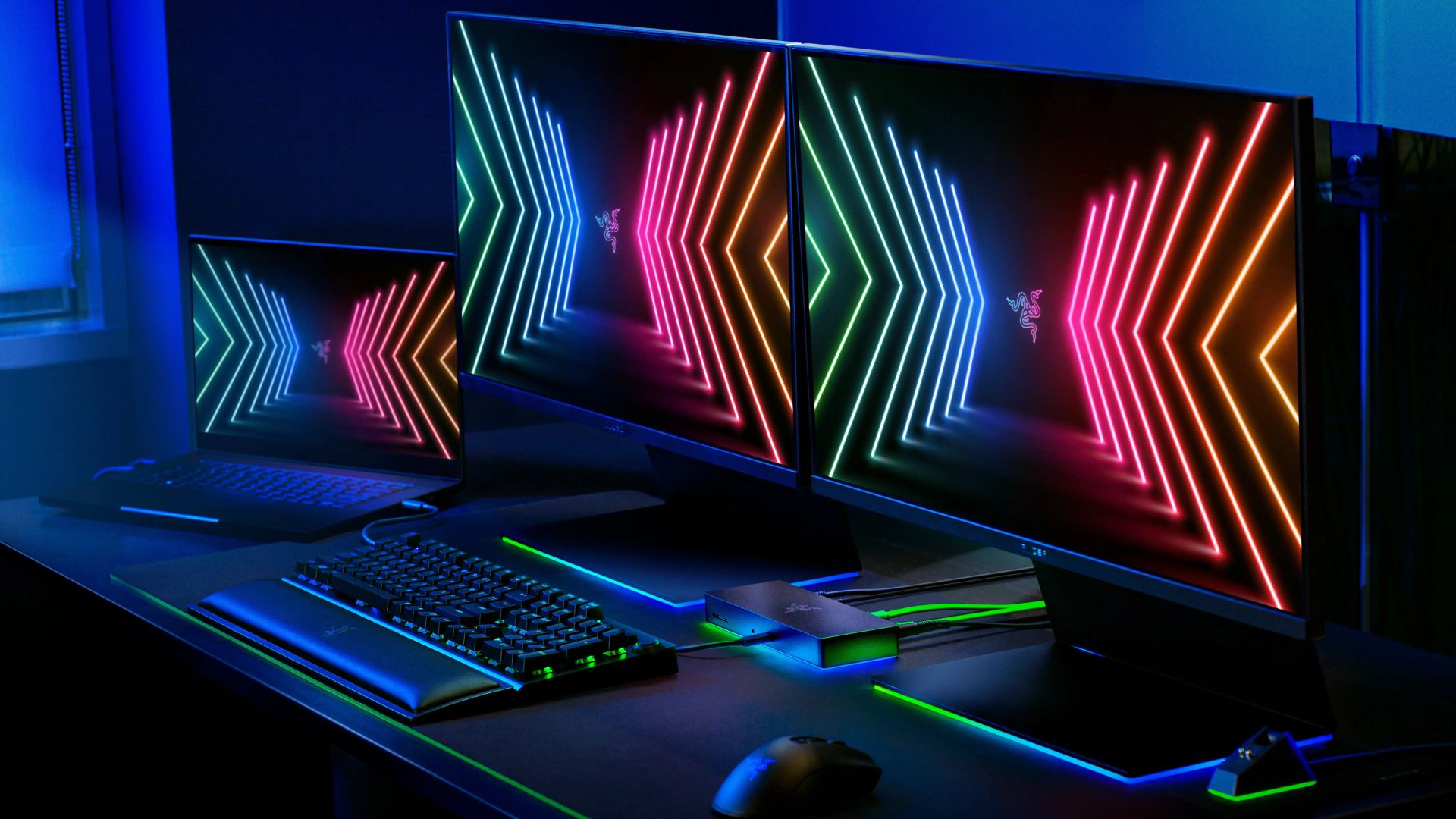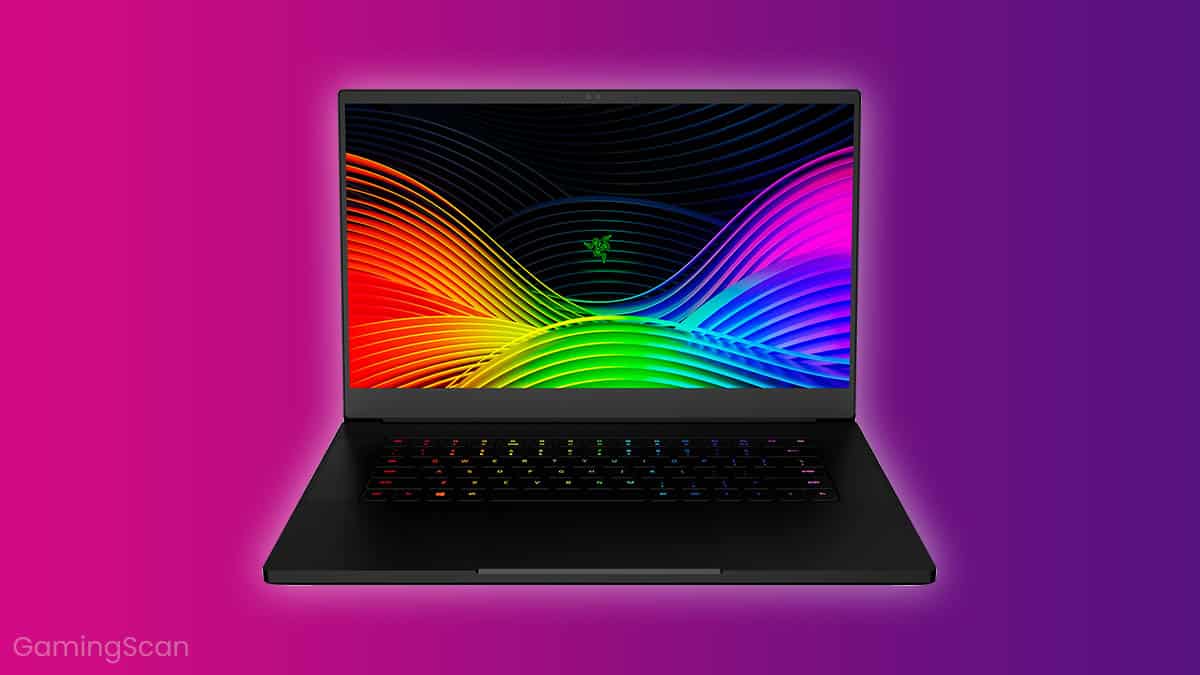Introduction
Welcome to the world of gaming laptops, where raw performance and speed make all the difference in your gaming experience. If you’re looking to take your gaming to the next level, overclocking your laptop might be just what you need. Overclocking is the process of increasing the clock speed of your laptop’s central processing unit (CPU) and graphics processing unit (GPU) to boost performance beyond the manufacturer’s specifications.
When you purchase a gaming laptop, the hardware comes set at certain clock speeds that are deemed safe and stable. However, through overclocking, you can push these components further, often resulting in better frame rates, smoother gameplay, and increased overall performance.
But before you dive into the world of overclocking, it’s essential to understand the risks involved and the precautions you need to take. Proper overclocking requires knowledge, patience, and the right tools. In this guide, we’ll walk you through the steps to safely overclock your gaming laptop, ensuring that you extract every drop of potential performance.
So, grab your laptop, buckle up, and let’s embark on this overclocking journey together. But remember, proceed with caution and at your own risk, as every laptop and its hardware capabilities are unique.
Understanding Overclocking
Before we dive into the intricacies of overclocking, it’s crucial to have a clear understanding of what overclocking actually means. In simple terms, overclocking refers to the process of increasing the operating frequency or clock speed of a component beyond its default settings.
Most modern gaming laptops come equipped with a CPU and GPU that have the potential to be overclocked. By increasing the clock speed, you can essentially make these components run at a faster rate, resulting in improved performance.
Why would you want to overclock your gaming laptop? The answer is simple – to gain that extra edge in gaming performance. Overclocking can help you achieve higher frame rates, faster load times, and smoother gameplay, ultimately enhancing your gaming experience.
However, it’s important to note that overclocking pushes your hardware beyond its intended specifications, which means there are potential risks involved. Overclocking generates more heat and may cause instability or even permanent damage to your laptop if not done correctly. Understanding these risks is crucial before proceeding with any overclocking attempts.
Additionally, not all gaming laptops are created equal when it comes to overclocking potential. Some laptops may have better cooling systems or more robust hardware, allowing for higher and more stable overclocks. It’s essential to research your specific laptop model to understand its overclocking capabilities and limitations.
Overclocking also requires careful monitoring of your laptop’s temperature. As you increase the clock speed, the temperature of your CPU and GPU will rise, and excessive heat can lead to throttling or even system shutdowns. Monitoring software such as HWMonitor or MSI Afterburner can help you keep an eye on your laptop’s temperatures and ensure that they stay within safe limits.
Overall, understanding the basics of overclocking is crucial before attempting any modifications to your gaming laptop. It’s important to weigh the benefits against the risks, consider your laptop’s capabilities, and proceed cautiously.
Prerequisites for Overclocking
Before embarking on the journey of overclocking your gaming laptop, there are a few prerequisites that you need to fulfill. These prerequisites will ensure that you have a smooth and successful overclocking experience while minimizing the risks involved.
1. Knowledge: Understanding the basics of overclocking is crucial. Educate yourself on the concepts and terminology related to overclocking, such as clock speed, voltage, and temperature. Familiarize yourself with the specific hardware components in your laptop and their limitations. Online resources, forums, and guides can be valuable sources of information.
2. Cooling: Overclocking generates more heat, so it’s important to have good cooling in place. Ensure that your laptop has sufficient cooling mechanisms, such as fans or a liquid cooling system. Additionally, consider investing in a laptop cooling pad to further enhance heat dissipation.
3. Stability Testing Software: To determine the stability of your overclock, you’ll need software that can stress test your system. Tools like Prime95 and FurMark can help you push your CPU and GPU to their limits, ensuring that your overclock is stable and reliable.
4. Overclocking Software: There are several software options available for overclocking your laptop. Research and choose a reliable and user-friendly software that is compatible with your specific laptop model. Popular choices include MSI Afterburner, EVGA Precision X, and AMD Overdrive.
5. Backup and Restore: Overclocking comes with risks, so it’s crucial to back up your important files. While the chances of irreversible damage are small, it’s always better to be safe than sorry. Make sure you have a backup of all your essential data so that you can restore your system if anything goes wrong.
6. Patience: Overclocking requires trial and error. It’s a process of experimentation and fine-tuning. Be prepared to spend time finding the perfect balance between performance and stability. Keep in mind that not all overclocks are successful, and some may require adjustments or even reverting back to default settings.
By fulfilling these prerequisites, you’ll be well-prepared to start your overclocking journey. Remember that overclocking is not without its risks, and it’s crucial to take proper precautions and proceed cautiously. Now that you have the necessary knowledge and tools, let’s move on to the step-by-step guide to overclocking your gaming laptop.
Step-by-Step Guide to Overclocking
Now that you have fulfilled the prerequisites, it’s time to dive into the step-by-step process of overclocking your gaming laptop. Follow these guidelines carefully to ensure a successful and stable overclock.
- Choose an Overclocking Software: Select a reliable and user-friendly overclocking software that is compatible with your laptop model. Install and launch the software on your laptop.
- Monitor Your Laptop’s Temperature: Open a temperature monitoring tool, such as HWMonitor, to keep an eye on your CPU and GPU temperatures. Ensure that your temperatures are within safe limits throughout the overclocking process.
- Start with Small Increments: Begin by increasing the clock speed of your CPU or GPU by small increments, such as 10-15 MHz. Apply the changes and run stability tests to check for any issues or crashes.
- Stability Testing: Use stress testing software like Prime95 or FurMark to push your CPU and GPU to their limits. Run these tests for an extended period to check for stability. If your system crashes or encounters errors, dial back the overclock until it becomes stable.
- Adjusting Voltage (Advanced): If you’re an advanced user, you may consider adjusting the voltage of your CPU or GPU to achieve a higher stable overclock. However, be cautious as increasing the voltage can generate more heat and may lead to permanent damage if not done correctly.
Continue iterating the process of increasing the clock speed, stability testing, and monitoring temperatures until you reach a level of overclock that meets your performance goals.
Remember, overclocking is a delicate balancing act. If you encounter instability or excessive heat, reduce the clock speed or voltage until your system becomes stable again. It’s essential to find the sweet spot where you achieve better performance without compromising on stability and temperature.
Once you are satisfied with your overclock, make sure to save the settings in your overclocking software, so they are applied automatically every time you start your laptop.
Keep in mind that every laptop is unique, and the maximum achievable overclock may vary. Be patient, take your time, and don’t push your hardware beyond its limits. Overclocking is a process of experimentation and finding the optimal settings for your specific laptop.
Now that you have successfully overclocked your gaming laptop, it’s time to fine-tune your overclock for optimal performance. We’ll discuss this in the next section to help you squeeze out every bit of potential from your hardware.
Choose an Overclocking Software
The first step in overclocking your gaming laptop is to choose a reliable and user-friendly overclocking software that is compatible with your laptop model. The overclocking software will act as the control center for adjusting clock speeds and other settings.
There are several popular overclocking software options available, each with its own set of features and compatibility. Here are a few commonly used software programs:
a) MSI Afterburner: MSI Afterburner is a highly regarded overclocking tool that is compatible with many gaming laptops. It offers a user-friendly interface with options to adjust clock speeds, voltage, fan speed, and monitor temperature and usage stats. With MSI Afterburner, you can easily control and fine-tune your overclock settings.
b) EVGA Precision X: EVGA Precision X is another robust overclocking software widely used by gamers. It provides similar features to MSI Afterburner and is particularly popular among users with EVGA graphics cards. EVGA Precision X allows you to fine-tune clock speeds, voltage, fan curves, and RGB lighting for a complete overclocking experience.
c) AMD Overdrive: If you have an AMD processor or graphics card, AMD Overdrive is a suitable choice. It provides features like adjusting clock speeds, voltage, and fan speed, along with monitoring temperature and usage. AMD Overdrive is designed specifically for AMD hardware, ensuring optimal compatibility and performance.
When selecting an overclocking software, consider the compatibility with your laptop’s hardware and the ease of use. Look for software that provides clear controls and monitoring tools, allowing you to make adjustments with confidence.
It’s important to note that different laptops may require different overclocking software due to variations in hardware components. Research your specific laptop model and consult forums or online communities dedicated to overclocking for recommendations on the best software to use.
Once you’ve chosen the overclocking software that suits your needs, download and install it on your gaming laptop. Familiarize yourself with the interface and the various options available. Understanding how to navigate the software is crucial for making accurate adjustments to your overclocking settings.
Now that you’ve selected the right overclocking software, it’s time to move on to the next step and learn how to monitor your laptop’s temperature to ensure optimal performance and prevent overheating.
Monitor Your Laptop’s Temperature
Monitoring your gaming laptop’s temperature is crucial when overclocking to prevent overheating and ensure the stability of your system. As you increase the clock speeds, the temperature of your CPU and GPU will inevitably rise, and excessive heat can lead to throttling, crashes, or even permanent damage to your hardware.
Fortunately, there are several temperature monitoring tools available that can help you keep an eye on your laptop’s temperature during the overclocking process. Here are some popular options:
a) HWMonitor: HWMonitor is a widely-used temperature monitoring tool that displays real-time temperature readings for various hardware components including the CPU, GPU, and motherboard. It also provides information on voltage, fan speeds, and power consumption. HWMonitor’s simple interface makes it easy to track temperature changes and ensure that they stay within safe limits.
b) Core Temp: Core Temp is a lightweight temperature monitoring tool designed specifically for monitoring CPU temperature. It provides accurate readings of each CPU core temperature. Core Temp also offers additional features such as displaying the load on each core and the maximum temperature reached. It’s a handy tool for monitoring the most important component during overclocking.
c) MSI Afterburner: If you’re using MSI Afterburner as your overclocking software, it comes bundled with a monitoring tool. Alongside the ability to adjust clock speeds and voltage, MSI Afterburner displays real-time temperatures for both CPU and GPU. It’s a convenient option if you prefer to have all the overclocking controls and monitoring in one software.
When monitoring your laptop’s temperature, it’s essential to keep an eye on the maximum safe temperature thresholds for your specific CPU and GPU. Consult the manufacturer’s specifications or do some research online to determine these limits. Generally, keeping your CPU and GPU temperatures below 80-85 degrees Celsius is recommended to ensure stable and safe operation.
During the overclocking process, continuously monitor your laptop’s temperature and take note of any significant temperature increases. If you notice that the temperatures are reaching or exceeding the safe limits, it’s time to dial back your overclock or consider improving your laptop’s cooling system.
Adding additional cooling mechanisms such as laptop cooling pads, external cooling fans, or even cleaning the laptop’s internal fans and vents can help dissipate heat more effectively. Maintaining proper airflow is crucial in preventing thermal throttling and maintaining system stability.
By actively monitoring your laptop’s temperature and taking appropriate steps to ensure it stays within safe limits, you can proceed with overclocking confidence and optimize the performance of your gaming laptop.
Start with Small Increments
Now that you have chosen the overclocking software and are monitoring your laptop’s temperature, it’s time to start the overclocking process. When increasing the clock speed of your CPU or GPU, it’s important to proceed gradually and start with small increments.
By starting with small increments, such as 10-15 MHz, you allow your laptop to adjust to the increased clock speeds without overwhelming the system. This gradual approach helps ensure stability and prevents potential crashes or overheating.
To begin, open your overclocking software and locate the settings for adjusting the clock speed. Depending on the software you are using, these settings may be labeled as “Core Clock” or “GPU Clock” for the GPU, and “Multiplier” or “Base Clock” for the CPU.
Start by increasing the clock speed by a small increment, such as 10 MHz, and apply the changes. It’s important to apply the changes and then run stability tests to check for any issues. Stability tests, such as stress testing tools like Prime95 or FurMark, will put your laptop’s hardware under heavy load to determine stability at the new clock speed.
Run the stability tests for an extended period, typically 1-2 hours, and monitor your laptop’s temperature to ensure it stays within safe limits. If your system crashes, freezes, or encounters errors during the stability test, it means that your overclock is unstable. In such cases, reduce the clock speed back to the previous value or even revert to the default settings.
If your laptop remains stable during the stability test, you can proceed to the next increment. Increase the clock speed by another small increment, apply the changes, and run the stability tests again. Repeat this process until you reach a point where your laptop becomes unstable, and then revert back to the previous stable clock speed.
This step-by-step approach allows you to find the highest stable overclock for your specific laptop. It’s important to note that every laptop is unique, and the maximum achievable overclock may vary based on factors such as cooling capabilities and hardware limitations.
Remember to always monitor your laptop’s temperature during the overclocking process. If you notice that temperatures are reaching or exceeding safe limits, it’s a sign that you should consider improving your cooling solutions or reducing the clock speeds to maintain stability.
By starting with small increments, running stability tests, and monitoring your laptop’s temperature, you can overclock your gaming laptop in a safe and controlled manner. In the next section, we’ll discuss the importance of fine-tuning your overclock to achieve optimal performance.
Stability Testing
Stability testing is a crucial step in the overclocking process as it helps determine the stability and reliability of your overclocked settings. During stability testing, your laptop’s hardware is pushed to its limits to ensure that it can handle the increased clock speed without encountering crashes or errors.
There are various stability testing tools available that can stress-test your laptop’s CPU and GPU. Two commonly used tools for stability testing are Prime95 for the CPU and FurMark for the GPU. These tools exert a heavy load on the respective components, highlighting any instability or weaknesses in your overclock.
When conducting stability tests, it’s important to ensure that you run the tests for a significant period of time, typically around 1-2 hours, to thoroughly assess the stability of your system. This extended duration allows for any potential issues to surface and helps you determine if your overclocked settings are reliable over an extended gaming session.
During stability testing, keep a close eye on your laptop’s temperature using monitoring software. The increased clock speeds generate more heat, so it’s crucial to ensure that your CPU and GPU temperatures remain within safe limits. If the temperatures rise to alarming levels or reach the maximum recommended thresholds, it is a sign that your cooling system may need improvement or adjustments to your overclock may be necessary.
If your laptop encounters crashes, freezes, or errors during the stability test, it indicates that your overclock is unstable. In such cases, you will need to revert your settings to the previous stable state or even return to the default values to ensure a stable system. Repeated crashes or errors can potentially damage your hardware, so it’s important to take stability testing seriously.
However, if your laptop successfully completes the stability tests without any issues or errors, it means that your overclock is stable at the tested clock speeds. You can proceed with confidence, knowing that your system can handle the increased performance during intense gaming sessions.
Remember, stability testing is an iterative process. It may require multiple rounds of adjustments, stability tests, and temperature monitoring to find the optimal balance between performance and stability. Each laptop is unique, and the maximum achievable overclock may vary, so it’s important to be patient and persistent throughout the testing process.
By conducting thorough stability testing, you can ensure that your overclocked settings are reliable and stable, providing you with a boost in performance for your gaming needs. In the next section, we’ll explore the advanced step of adjusting voltage, which can further fine-tune your overclock.
Adjusting Voltage (Advanced)
Adjusting voltage is an advanced step in the overclocking process that can further fine-tune your overclocked settings. While increasing clock speeds can boost performance, adjusting voltage allows you to optimize the stability and reliability of your overclock.
When you increase clock speeds, the CPU or GPU may require additional voltage to maintain stability. By increasing the voltage, you provide the necessary power to support the higher clock speeds, reducing the chances of crashes or instability.
Adjusting voltage, however, requires caution as increasing voltage can lead to higher heat generation and potential damage if not done correctly. It’s important to follow these guidelines when adjusting voltage:
a) Increase Voltage Conservatively: Start by increasing the voltage in small increments, such as 0.05-0.10 volts. Apply the changes, run stability tests, and monitor temperatures to ensure stability and avoid excessive heat buildup.
b) Monitor Temperatures: Increasing voltage can result in higher temperatures, so it’s crucial to keep a close eye on your laptop’s temperature during stability testing. If temperatures rise to unsafe levels, consider dialing back the voltage or improving your cooling solutions.
c) Avoid Excessive Voltage: While a higher voltage can help stabilize your overclock, there is a limit to how much voltage your hardware can handle. Excessive voltage can lead to excessive heat, reduced hardware lifespan, or even permanent damage. Always research and adhere to safe voltage ranges for your specific hardware.
d) Fine-Tuning: Adjust voltage and clock speeds iteratively. Increase the clock speed, apply voltage adjustments, perform stability tests, and repeat the process until you find the optimal balance between performance and stability.
Adjusting voltage is an advanced step in overclocking, and it requires careful consideration, monitoring, and knowledge of your specific hardware. If you are uncertain or uncomfortable with adjusting voltage, it’s best to stick to increasing clock speeds within safe limits.
It’s important to note that not all laptops offer the ability to adjust voltage. Depending on your laptop model, the manufacturer may lock voltage control for safety reasons. In such cases, focus on optimizing your overclock by fine-tuning the clock speeds and ensuring proper cooling.
Remember, overclocking and adjusting voltage always carry risks, and it’s crucial to proceed with caution. Patience, thorough testing, and careful monitoring of stability and temperatures are key to finding the optimal overclock for your specific gaming laptop.
With the steps covered in this guide, you are now equipped with the knowledge and tools to safely and effectively overclock your gaming laptop. Let’s move on to the next section, where we’ll provide some tips for fine-tuning your overclock and achieving optimal performance.
Fine-tuning Your Overclock
Once you have successfully overclocked your gaming laptop, it’s time to fine-tune your settings to achieve optimal performance. Fine-tuning involves making minor adjustments to your clock speeds, voltage, and other settings to find the perfect balance between performance, stability, and temperature.
Here are some tips to help you fine-tune your overclock:
1. Stability Testing: Continue running stability tests even after initial overclocking to ensure the stability of your settings. This is especially important if you make further adjustments to clock speeds or voltage. Stability tests help identify any potential stability issues that may arise from fine-tuning.
2. Gradual Adjustments: Make small, incremental adjustments to your settings for fine-tuning purposes. Gradually increase or decrease the clock speeds or voltage to evaluate the effect on stability and performance. This allows you to pinpoint the optimal settings without drastically affecting system stability.
3. Performance vs. Temperature: Balance your desire for better performance with the need to maintain safe temperatures. It may be tempting to push your laptop to the max, but it’s important to find a compromise that ensures both stability and reasonable temperatures. If temperatures are getting too high, consider reducing clock speeds or increasing cooling measures.
4. Test Real-world Performance: Fine-tune your overclock by testing it in real-world scenarios, such as running demanding games or applications that you frequently use. Monitor the performance and stability during these activities. This will give you a better understanding of how your overclock performs in practical usage.
5. Take Note of Changes: Keep a log of the changes you make during the fine-tuning process. Note the adjustments in clock speeds, voltage values, and any stability or temperature observations. This log will serve as a reference for future optimizations or troubleshooting.
6. Research and Seek Advice: Consult online forums or communities dedicated to overclocking for tips and advice specific to your laptop model or hardware components. Other users may have helpful insights or recommendations to fine-tune your overclock further.
Remember, fine-tuning is an ongoing process. As you gain more experience and understanding of your laptop’s capabilities, you can continue to refine and optimize your overclock. Regularly reevaluate your settings and make adjustments accordingly based on changing needs or hardware performance.
With careful fine-tuning, you can achieve the ideal balance between performance, stability, and temperature, maximizing the potential of your gaming laptop’s hardware.
In the next section, we’ll discuss some potential risks and the precautions you should take while overclocking to ensure the safety of your system.
Potential Risks and Precautions
While overclocking your gaming laptop can provide performance benefits, it’s important to be aware of the potential risks involved. Here are some common risks associated with overclocking and the precautions you should take:
1. Heat and Temperature: Overclocking increases power consumption and generates more heat. This can lead to higher operating temperatures, potentially causing instability, reduced lifespan, or even permanent damage to your laptop’s components. Ensure that your laptop has adequate cooling mechanisms, monitor temperatures closely, and take necessary steps to maintain safe operating temperatures.
2. Hardware Damage: Incorrect overclocking settings or excessive voltage can strain your laptop’s hardware, leading to potential damage. To minimize the risk, start with conservative overclocking settings, apply small increments when adjusting clock speeds or voltage, and keep stability testing for extended periods to identify any issues.
3. Voiding Warranty: Overclocking often voids the warranty provided by the manufacturer. This means that any damage caused by overclocking may not be covered under warranty. It’s important to understand the terms and conditions of your laptop’s warranty before proceeding with overclocking and be prepared to accept the associated risks.
4. Data Loss: Overclocking can sometimes lead to system crashes or instability, which may result in data loss or corruption. It’s crucial to regularly back up your important files and documents to an external storage medium or cloud storage. This way, if any issues occur during the overclocking process, you can restore your data without any significant loss.
5. Varied Results: Overclocking results can differ from laptop to laptop, even among the same model. Every laptop’s hardware has individual capabilities and limitations. Therefore, it’s important to approach overclocking with realistic expectations and understand that the maximum achievable overclock may vary.
6. System Instability: Overclocking can potentially lead to system instability, resulting in crashes, freezes, or other errors. If you encounter stability issues, it’s important to revert to stable settings or reduce the overclock. Stability testing and gradual adjustments are key to finding the optimal balance between performance and stability.
7. Power Consumption and Battery Life: Overclocking increases power consumption, which can impact your laptop’s battery life and overall power usage. Be aware that overclocking may result in reduced battery life, and consider connecting your laptop to a power source during gaming sessions to ensure optimal performance.
By understanding these potential risks and taking the necessary precautions, you can minimize the likelihood of encountering issues and ensure a safer overclocking process. It’s important to approach overclocking with patience, research, and a thorough understanding of your laptop’s capabilities.
In the final section, we’ll provide some tips for optimal overclocking to help you make the most out of your gaming laptop.
Tips for Optimal Overclocking
To make the most out of your overclocking experience and achieve optimal performance from your gaming laptop, consider the following tips:
1. Do Your Research: Before overclocking, thoroughly research your specific laptop model and its hardware components. Understand the capabilities and limitations of your CPU and GPU. This knowledge will help you set realistic expectations and make informed decisions during the overclocking process.
2. Start with a Stable System: Ensure that your laptop is in good working condition before attempting any overclocking. Run a thorough system cleanup, update drivers and software, and ensure that your laptop is free from dust and debris. A stable and well-maintained system forms a solid foundation for successful overclocking.
3. Take It Slow: Overclocking is a process of trial and error. Start with conservative settings and small increments when adjusting clock speeds or voltage. Gradually increase the overclock and stability test at each step to ensure stability and avoid unnecessary risks. Patience and careful consideration will yield better results.
4. Monitor Temperatures: Always keep a close eye on your laptop’s temperatures during overclocking. Monitor tools like HWMonitor or MSI Afterburner can help you track temperatures and ensure they remain within safe limits. Excessive heat can lead to instability and damage your hardware, so effective cooling is crucial.
5. Backup Your Data: Before embarking on the overclocking journey, back up your important data. Overclocking may occasionally result in system crashes or instability, which could potentially lead to data loss. Having a backup ensures that your important files are protected.
6. Test Stability: Perform thorough stability tests using tools like Prime95 or FurMark. Run these tests for an extended period to ensure that your overclock can handle sustained heavy workloads. Stability testing is essential for identifying any potential stability issues and making necessary adjustments.
7. Fine-tune for Real-world Usage: Adjust your overclock settings based on real-world usage. Test your overclocked system with the games or applications you use most frequently. Monitor performance, stability, and temperatures during these activities to find the optimal balance for your specific needs.
8. Keep Track of Changes: Maintain a log of your overclocking settings, adjustments, and stability observations. This log will help you keep track of what works and what doesn’t, making it easier to troubleshoot any issues that may arise or revert to stable settings if necessary.
9. Take Breaks and Reevaluate: Overclocking is an iterative process. Take breaks during the overclocking journey and reevaluate your settings periodically. As you gain experience and understanding, you may uncover new opportunities for further optimization or adjustments that can improve performance and stability.
10. Know Your Limits: Understand that every laptop and its hardware components have limits. Don’t push your laptop too far beyond these limits in pursuit of maximum performance. Finding a stable and reliable overclock that works well for your specific system is more important than pushing for extreme overclocking records.
By following these tips, you can optimize your overclocking experience and achieve the best performance possible from your gaming laptop. Remember, overclocking should be approached with caution and proper understanding of the risks involved. Always prioritize stability, temperature management, and the longevity of your hardware.
Conclusion
Congratulations! You have now reached the end of this guide on overclocking your gaming laptop. By following the step-by-step process, understanding the potential risks involved, and implementing the recommended tips and precautions, you can successfully overclock your laptop and unlock its full potential.
Overclocking your gaming laptop can provide significant performance gains, allowing you to enjoy smoother gameplay, higher frame rates, and an overall improved gaming experience. However, it’s crucial to approach overclocking with caution, patience, and a thorough understanding of your laptop’s capabilities and limitations.
Remember to start with a stable system, choose the right overclocking software, monitor temperatures closely, run stability tests, and fine-tune your settings for optimal performance. Take breaks to reevaluate and always keep track of your changes and observations to troubleshoot any issues that may arise.
Additionally, it’s important to prioritize the safety and longevity of your hardware. Be aware of the potential risks involved, such as increased heat generation, potential hardware damage, voiding of warranties, and data loss. Taking necessary precautions, such as maintaining proper cooling, backing up your data, and respecting safe voltage ranges, will help keep your laptop and data safe throughout the overclocking process.
Lastly, remember that each laptop is unique, and the overclocking results may vary. It’s essential to find the right balance between performance, stability, and temperature that works best for your specific system.
With the knowledge and guidelines provided in this guide, you are equipped to embark on your overclocking journey. Keep exploring, experimenting, and fine-tuning your settings to make the most out of your gaming laptop’s capabilities.
Happy overclocking and enjoy your enhanced gaming experience!







